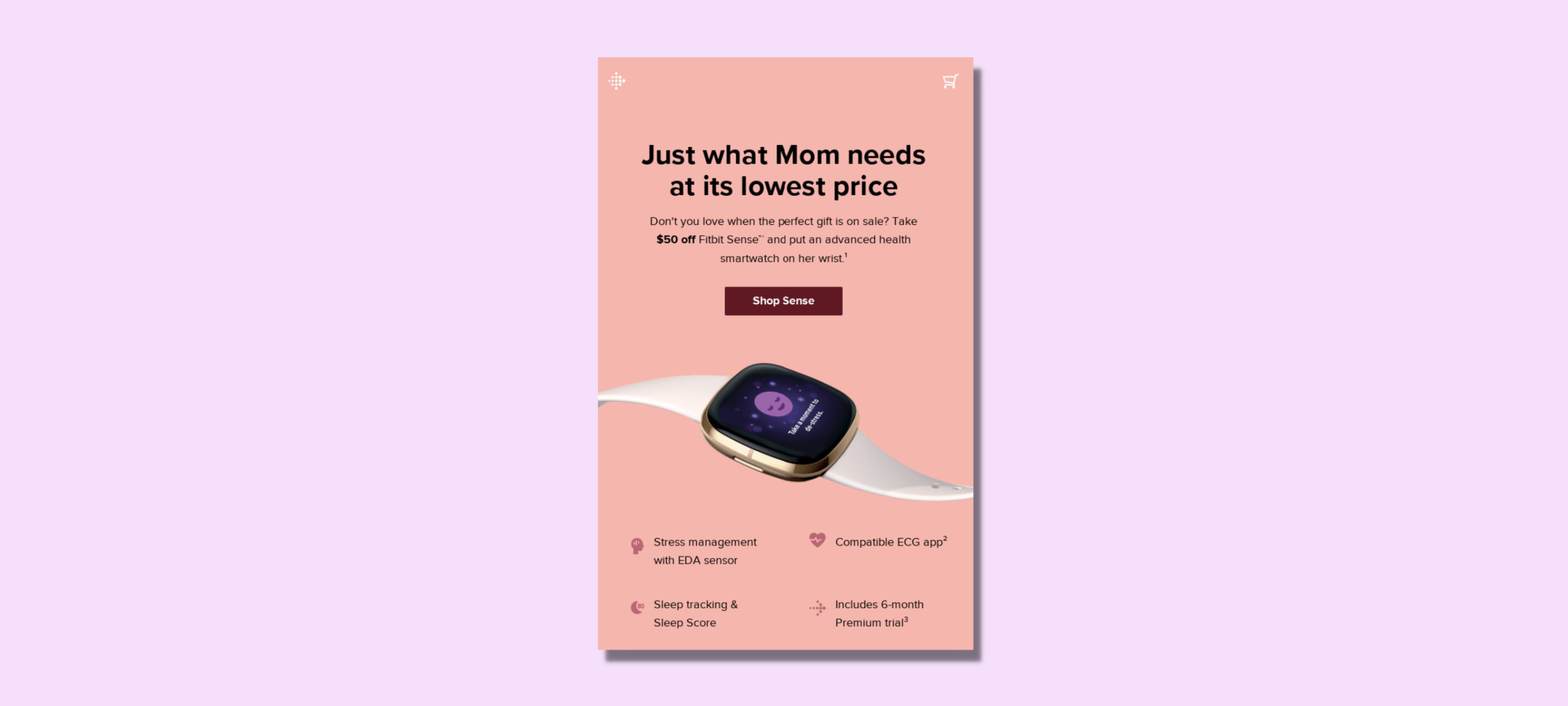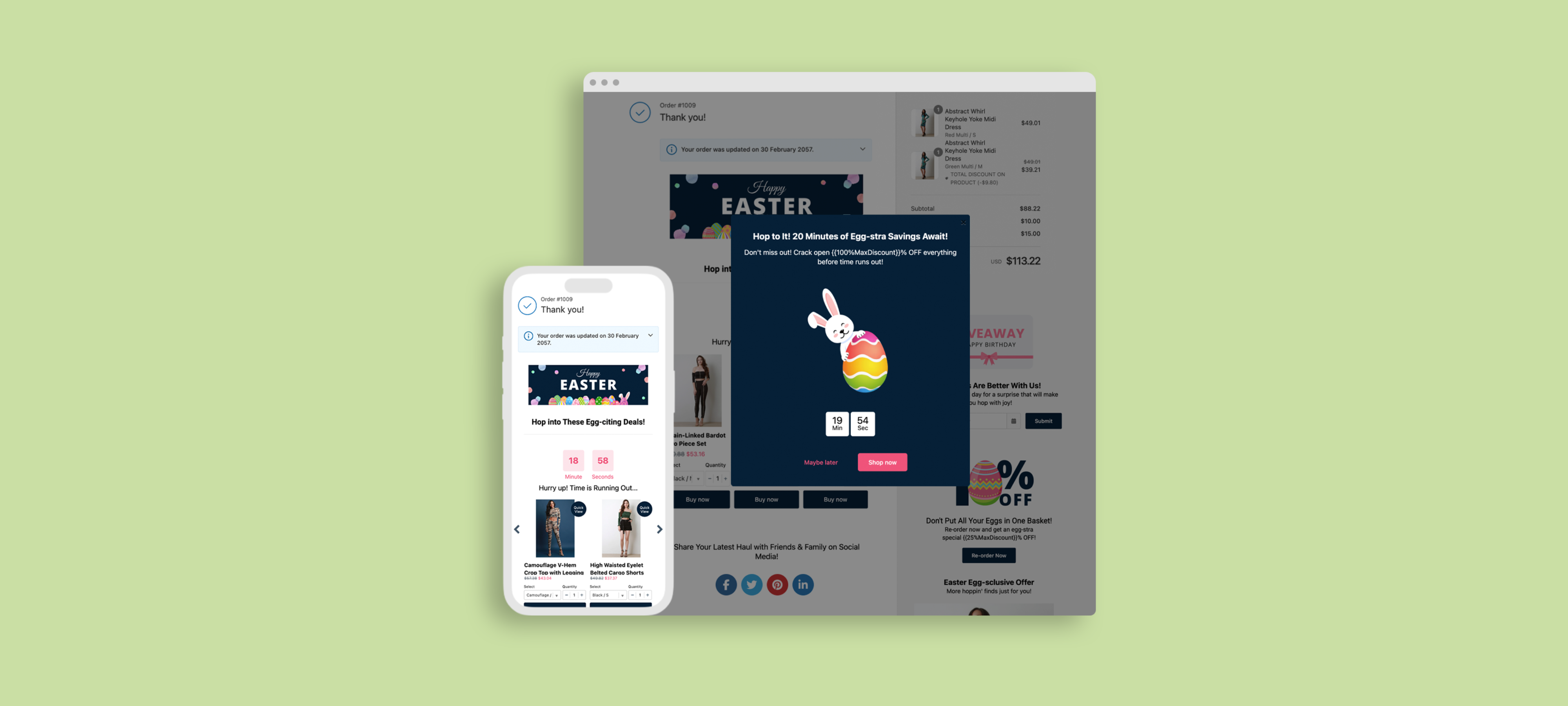Geographic Segmentation: An Easy Way To Make More Sales
.jpg)
Around the world and across countries and regions, consumers in different locations display unique characteristics and behaviors.
For example, Canadians wrap-up for winter while Australians head for the beach. New Yorkers love bagels while Californians enjoy burritos. City dwellers buy apartments while the country folks prefer houses.
As an ecommerce entrepreneur, such geographic-based differences can have an enormous impact on your product positioning and overall sales.
That's where geographic segmentation comes in. In a study by Mobile Marketer, location data helped marketers grow their customer base by 85% and boost their customer engagement by 83%.
Plus, it also gave marketers more insight into their customers’ interests and needs. So, today we're going to deep-dive into geographic segmentation and find out how it can enhance your ecommerce marketing strategy.
We'll cover:
- What geographic segmentation is
- The benefits of geographic segmentation
- Six excellent examples of geographic segmentation
Let's not beat around the bush!
What is Geographic Segmentation?
Geographic segmentation splits up your target market by location so you can better serve customers in each area.
This is typically achieved by grouping your audience under geographic headings such as country, state, region, city, etc. However, segments can also be determined by variables such as population density, climate, season, and cultural preferences (more on those in a minute).
A perfect example of geographic segmentation comes from fast-food giant McDonalds. Check out McDonald's ads from around the world and note how differ based on location:
Geographic Segmentation Advantages
Several benefits come with segmenting your audience along geographic lines. Here's three of the best:
1. Easy to Start
Some types of segmentation can drive you up the wall if you're not careful. Behavioral segmentation or psychographic segmentation can involve an overwhelming number of data points. Especially for those who are just dipping their toe in the water.
Geographic segmentation is the most straightforward type of segmentation. Why? Because identifying where somebody lives is easier than deciphering the elusive workings of their inner psyche or behavioral patterns.
2. More Effective Advertising
When you know your audience's location, you can tailor your offers and advertising to resonate better. If you can address a location-specific pain point or speak in the local lingo, customers will be more likely to engage with your message.
For example, check out this ad by sporstwear giant Nike that's specifically made to appeal to the London segment of their global audience:
When selling to a wide pool of customers, segmenting your audience by location allows you to understand each market's location-specific characteristics better, and address their needs individually.
When selling to a narrow pool of customers in a specific region or area, geographic segmentation means you won't waste money marketing to customers outside of your target audience.
3. A Better Customer Experience
When your messaging is on point and highly relevant to your audience's location, you'll find that your sales increase and that customers develop a better relationship with your brand.
With irrelevant advertising bombarding consumers at every turn, using geographic segmentation is a significant step towards helping them find products they need and want to use.
6 Brilliant Geographic Segmentation Examples
As we touched on above, there are several variables to consider beyond using coordinates when using geographic segmentation.
These include climate, cultural preferences, urbanicity, and more. Let's look at a few real-world examples to learn how marketers like you usethis kind of segmentation to their advantage.
1. Segmenting by Season or Climate
Using geographic segmentation to split your customers into groups based on climate or seasonality is a powerful tactic.
For example, as we enter Fall in the northern hemisphere, clothing brand Taylor Stitch knows I'm going to need some layers to keep warm. And they certainly emphasize that in their Facebook ads:

The poor model looks frozen. And since I was rather cold on my morning walk today too, this ad makes me ask the question: maybe I need some layers also?
This is the power of geographical segmentation. Taylor Stitch's advertising and offer resonate better because they've got specific about the locations they target.
To illustrate, think about what would happen if they weren't using geographic segmentation. How well would this kind of campaign go down if it was being shown to South Africans gearing up for a summer BBQ?
Answer: not very well.
Another good example of geographic segmentation comes from Fashion giant H&M who uses it to enhance their clothing's relevancy. Here are two screen grabs from their Australian (left) and their Swedish (right) homepage:

Notice how the clothes they're promoting differ based on the opposite seasons in the northern and southern hemispheres. On the Aussie site, you've got Spring clothes: shorts, tank tops, and dresses, while on the Swedish site, you find jumpers, cardigans, and outerwear for Fall.
Think about how you can tweak your store's offering based on climate in the same way. Consider how your customer's climate might modify the message or offer you're sending to them.
2. Segmenting by Cultural Preferences
Different regions have different values, tastes, and beliefs. Such variations are where using cultural-based geographic segmentation can pay big dividends you do it right.
Let's return to a company that does this very well: McDonald's. here's a campaign they ran in Spain:

Hold up. Where's the Coca-cola? Who took the sesame bun? What is this witchcraft?
Well, the thing is Ronald and Co. know precisely what they're doing. While the idea of red wine with McDonald's may seem strange to North Americans, a glass of vino is an integral part of any good meal to many southern Europeans.
You'll find McDonald's segmenting their audiences like this right across the globe. For example, here's another ad from McDonald's India, which plays off the popularity of the nation's national sport: cricket.

In a US version of this ad, you'd probably find baseball or basketball as the cultural reference point.
But it's not just fast food retailers doing this. Nearly every successful large international company tailors its offering based on the cultural preferences of a given location.
For example, look at furniture company Ikea's UK (top), and UAE (bottom) homepages differ. The UK is in the run-up to Christmas, and so their website and products reflect the cultural significance of the holiday season, while for most UAE customers, Christmas is just a regular time of the year.

While you don't have to revamp your ecommerce homepage for every location you sell to, you can apply the same underlying principles.
For example, you could segment your audience by countries or regions with different cultural events and design matching marketing campaigns around them.
Thanksgiving in the USA, Diwali in India, Las Posadas in Latin America, Chanukah in Israel, and Mardi Gras in New Orleans, are just a few examples that come to mind.
3. Segmenting by Population Density
If you've got an audience that resides in urban, suburban, and rural areas, then it's likely that they'll have different needs and wants. Using geographic segmentation helps you deliver a more personalized message to each audience segment.
A good example is auto-manufacturer Ford; here are two ads they're running in the UK:

Notice any differences between them?
In the ad on the left, you can see they're targeting an urban-dwelling segment of their audience. The creative reflects that; a small car on a rooftop with a city skyline in the background.
The ad on the right appeals more to a rural audience segment evidenced by the country house, large truck, and farmer with a pitchfork in his hands
You'll find many other big brands segmenting their audience along these lines, case in point bike manufacturer Trek:

Trek sells products for both urban and rural populations. Their urban audience segments are more interested in lightweight commuting bikes with skinny tires for nipping around town.
On the other hand, the rural segments are more interested in sturdy mountain bikes with thick tires for cycling over trails and mud.
Using geographic segmentation like this means both Trek and Ford can make their advertising more relevant to all their audience segments no matter where they live.
If you've got both rural and urban customers, think about how you can alter your messaging and products to resonate more deeply with each segment.
4. Segmenting by New Markets
When you're entering a new market, it makes sense to use geographic segmentation to announce your arrival or launch your product.
Because while your existing customers might be familiar with your brand, a new market mightn't be aware you exist or know what you offer.
For example, gym chain Planet Fitness uses geographic segmentation to raise awareness among locals when they're opening a new club:

By targeting a segment of their audience who lives in Billings, MT, Planet Fitness can make sure their message is getting to the right folks without wasting ad spend marketing to people who live too far from the new facility.
Here's another example from food waste fighters OLIO.

They're launching their service in Scotland. Like Planet Fitness, OLIO can use geographic segmentation to focus its marketing on people who live in their target area.
5. Segmenting by Time Zone
Ecommerce businesses often have customers scattered across many different time zones.
And that's a problem because the timing of your marketing messages can significantly impact their effectiveness.
For example, imagine waking up on Monday morning and seeing this ad from Instacart as you lie in bed:

How likely do you think you are to want to have alcohol delivered to your door before work? Probably not very.
But now imagine instead of Monday morning, it's Friday evening. You're on your way home from the office. Now, a home-delivered tipple doesn't seem like a lousy offer, right?
This is why segmenting your audience by timezone is crucial. It can drastically affect the way your marketing works.
Email marketing is one channel that benefits especially well from geographic segmentation. Think about it; you're probably more likely to miss newsletters and promotions that arrive into your inbox at 3:02 am than those that ping in while you're having your morning coffee, right?
Designing marketing campaigns that align with your audience segment's timezones is a sure-fire way to boost your audience engagement and make more sales.
6. Segmenting by Delivery Address
Shameless plug for one of apps incoming, but ReConvert now lets you segment your audience by location allowing you to display a custom thank you page (and custom offers) according to the customer's delivery address.
Using triggers, you can show customers a hyper-relevant thank you page based on their order data. You're not just limited to geographic segmentation either. You can show custom thank you pages and upsell offers based on:
- Specific products ordered
- Number of previous orders
- Product tags
- Date & time
- Discount name
- Shipping method & more
As you can imagine, this opens up quite a few interesting post-purchase conversion opportunities. Check out this video from Stilyo's Co-founder Eric about how to get started using this powerful segmentation tactic to power-up your thank you page:
Start Using Geographic Segmentation Today
Audience segmentation allows you to deliver personalized, relevant, and useful marketing messages to your target customers.
Geographic segmentation rocks because it's the easiest way to get started. The key is to figure out how best to use it for your business.
Are you a large brand who wants to deliver different marketing messages across many regions, or a small business looking to laser-target customers in your area?
Can your products be sold in all places at all times, or do they have unique appeal at certain times of the year in specific regions?
Asking questions like these will help you divide your audience into useful geo-segments. That'll make your ecommerce marketing sharper, give your customers a better experience, and bring in more sales for your eCommerce store.






.png)
